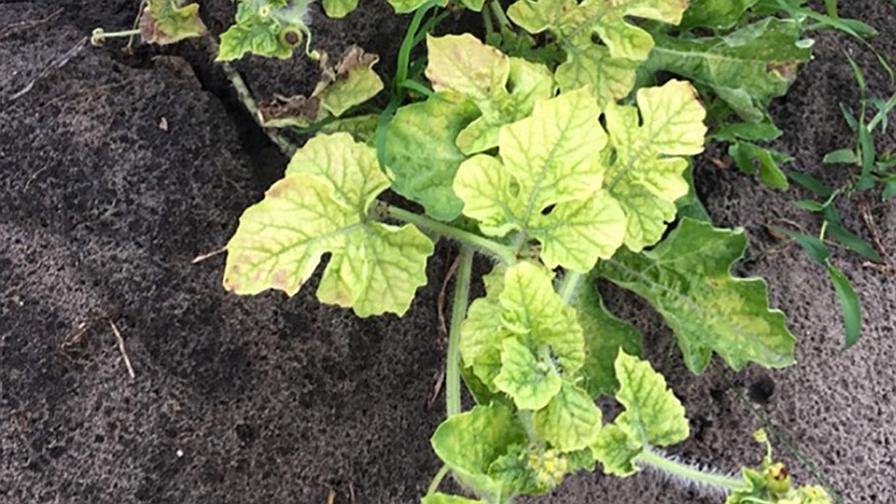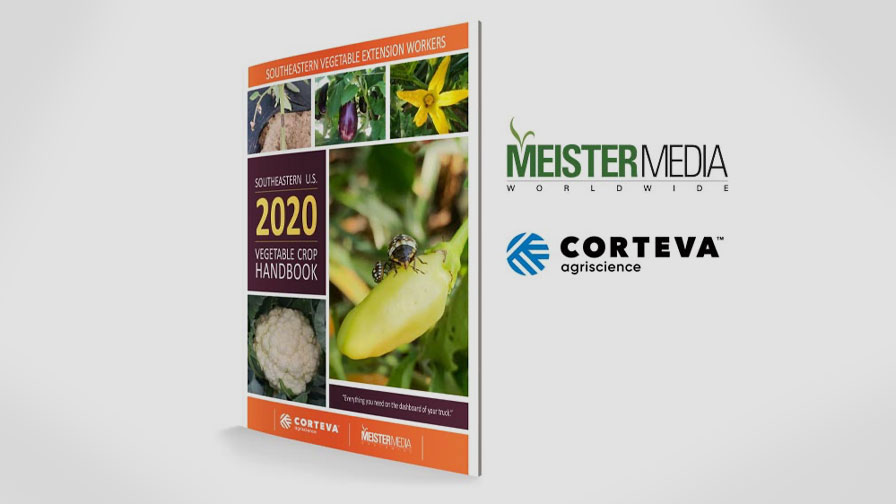A New Cucurbit Disease Continues To Spread Across U.S.

Cucurbit chlorotic yellows virus (CCYV) symptoms on melon. CCYV looks a good deal like cucurbit yellow stunting disorder virus (CYSDV). The best CCYV treatment is to control whiteflies.
Photo courtesy of Mathews L. Paret, UF/IFAS
Although cucurbit chlorotic yellows virus (CCYV) arrived in the U.S. only a few years ago, it is spreading rapidly. Lab tests confirmed the first reported case in the Imperial Valley in California in 2019. Genetic analysis lead USDA ARS scientists to believe CCYV actually arrived in the Imperial Valley in 2014, but it remained undetected due to how closely it resembles another crinivirus, cucurbit yellow stunting disorder virus (CYSDV).
In the past year, pathologists confirmed its presence on squash in Georgia, on cantaloupe in Texas, and now on watermelon in Florida.
The first ever confirmed case of CCYV took place in Japan in 2004.
Here’s what you need to know about this new disease.
Vector: Whiteflies, biotypes B and Q
Visible Symptoms
CCYV causes chlorotic mottle symptoms, interveinal chlorosis, and severe leaf yellowing on several cucurbit crop plants, including melon, watermelon, and cucumber. Symptoms, like those of many criniviruses, typically begin as chlorotic spots that coalesce into larger areas of interveinal chlorosis with veins remaining green in most cucurbitaceous hosts, according to USDA.
Similar-Looking Virus
When CCYV first appeared in the U.S. in the Imperial Valley, the melon plants exhibited interveinal yellowing and chlorotic spot symptoms similar to those caused by CYSDV, which has been prevalent in the region since 2006. However, nucleic acid extracts of two strongly symptomatic plants tested negative for CYSDV, according to the USDA ARS.

Symptoms of cucurbit yellow stunting disorder virus. Photo by Gene McAvoy
Of the 23 samples taken, 19 tested positive for CCYV. Yet many of the samples were also infected with CYSDV and squash vein yellowing virus (SqVYV).
Current Treatment
Early USDA ARS studies found that CYSDV-resistant plants were not significantly effective to control CCYV. In the Salinas Valley, USDA ARS scientists found some resistance against CCYV in melon, and breeding efforts are in progress to incorporate resistance into new varieties.
Whiteflies can acquire CCYV during feeding periods of 6 hours with longer transmission resulting in increased efficiency. The virus is retained for 15 days, longer than any other members of the genus characterized to date. Control is through management of whitefly vectors and timely removal of reservoir hosts. Insecticide treatment to seedlings 1 to 3 days prior to transplanting is effective to reduce virus infection.










